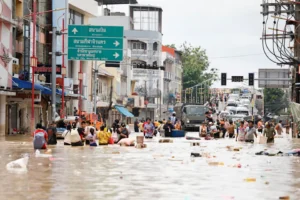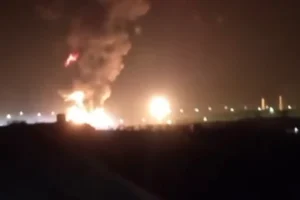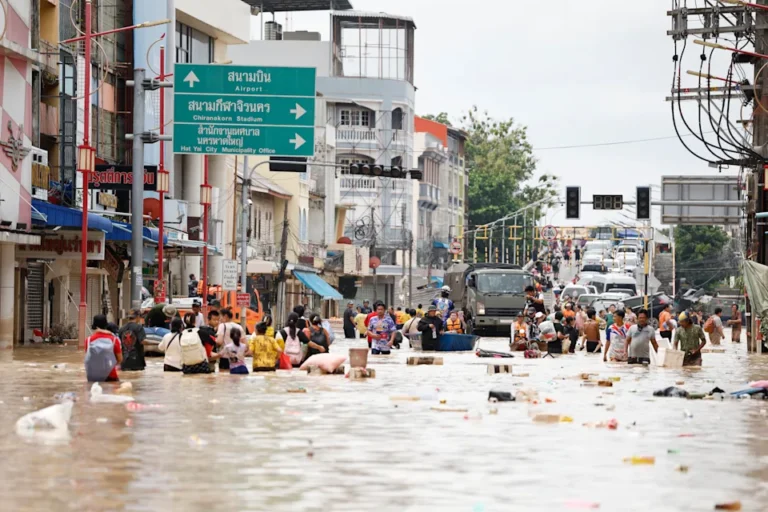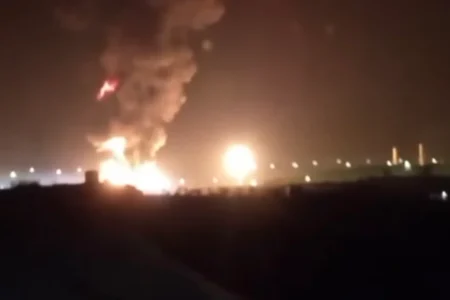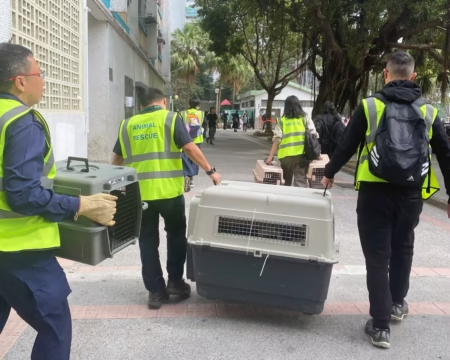The death toll from severe flooding in southern Thailand has risen to more than 80 people as floodwaters began to subside on Thursday, officials reported. Torrential rains over the weekend triggered widespread flooding in 12 southern provinces, affecting about 1 million households and over 3 million people.
The heaviest impact was recorded in Nakhon Si Thammarat, Patthalung, Songkhla, Trang, Satun, Pattani, and Yala provinces. While water levels have fallen in several areas, some provinces, including Pattani and Nakhon Si Thammarat, still face high water levels.
Government spokesperson Siripong Angkasakulkiat said in a press conference in Bangkok that deaths in Songkhla province surged from six to 55 on Thursday, bringing the overall toll across seven of the worst-hit provinces to at least 82. Authorities expect water levels to recede below river banks in all affected areas by Thursday evening.
Earlier this week, Prime Minister Anutin Charnvirakul declared a state of emergency in Songkhla, which includes southern Thailand’s largest city, Hat Yai, citing the “unprecedented severity” of the floods. Video footage from Hat Yai showed water levels falling, exposing widespread damage across the city.
The floods caused major disruptions, leaving thousands of residents trapped. Essential services were severely affected, with electricity, water, and communication lines disrupted in many areas. Authorities have established emergency measures to support affected communities and restore essential services.
In Hat Yai, eight field hospitals were set up to assist Hat Yai Hospital, which was unable to operate at full capacity due to flooding. The Public Health Ministry reported that 20 critically ill patients were airlifted to safety, while additional food and medical supplies were delivered to hospital staff and remaining patients.
The flooding has also impacted roads and transport networks, slowing rescue operations and delaying aid delivery in some areas. Local authorities continue to work on evacuations, water drainage, and infrastructure repair to prevent further casualties and damage.
Analysts note that extreme rainfall events have increased in southern Thailand over recent years, highlighting the region’s vulnerability to climate-driven disasters. Government and disaster agencies are reviewing emergency preparedness measures to improve responses to future floods.
In addition to the immediate humanitarian impact, the floods have affected agriculture, fisheries, and local businesses. Officials are assessing economic damages and planning support for families and communities who have lost homes, livestock, and livelihoods.
Authorities urge residents to remain cautious, avoid flooded areas, and follow evacuation orders. While water levels are receding, risks remain from unstable infrastructure, contaminated water, and potential landslides in affected regions.
In summary, southern Thailand flood deaths have surpassed 80 as waters begin to fall across affected provinces. The disaster has left millions impacted, with widespread infrastructure damage, disrupted services, and emergency operations underway. Authorities continue to prioritize rescue efforts, medical support, and recovery measures to help affected communities recover.

